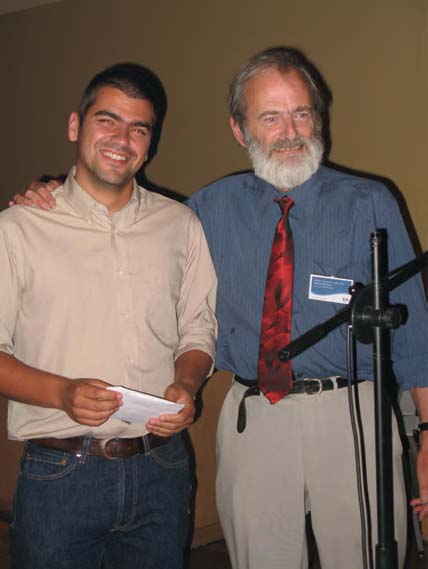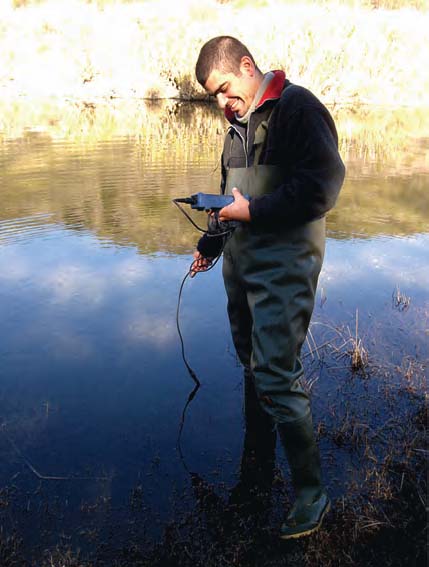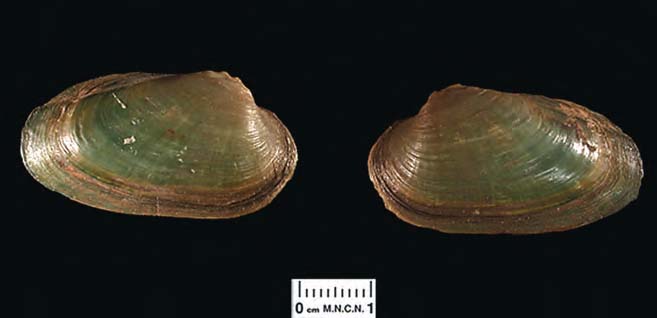|
The World Malacological Congress must be the largest meeting of malacologists; this year Thierry Backeljau and his excellent conference team organised a wonderful meeting in Antwerp. Not only were there four days of lectures, talks and posters, but there were many social events, such as the Icebreaker at Antwerp Zoo; poster session with cheese and wine reception (plus the local Belgian beers); the American Malacological Society Auction through to the Congress Dinner at the Grand Café Horta. This enabled people to wander around the venue and sit talking to their colleagues, rather than exchanging e-mails, as they do for the intervening three years. There were 421 malacologists from 45 countries and the top 3 countries were USA (n=75), Germany (n=60) and Spain (n=37), yet proportionally, the best attended nation was Barbados with about 0.75 delegates per 100,000 inhabitants! The congress started on a high, as the venue could be found by looking for the elephants near the Railway Station. Then you found the Zoo entrance, and the long queue of registrants. It was fantastic seeing some many old friends; beer and wine flowed, helping the party along. There were some absent friends, as delays to trains meant that some UK participants didn’t arrive until later. There were lots of students and it was really exciting to see young people just starting research on molluscs mingling with the golden oldies, who been researching molluscs for years. Many of the UK participants were based in the student accommodation, discovering pastoral life next to the meeting hall, or walking to the venue across the park. We all discovered the mosquitos that lived near the students halls. The following morning you could identify those unfortunate people who left their windows open in the sultry stormy weather in Antwerp during July; mosquito bites on faces and arms! In terms of conference highlights, we will all have different memories! The standard of talks is now so high, as technology evolves constantly, so video and slides can be incorporated in talks with little cost. For those based in the UK, here are some talks that might have interested you at the congress. Active camoflage One of Robert Cameron’s highlights on the first day was the video of an Enid from Canary islands; we are all aware of the difficulty finding Merdigera obscura, as their shells are often coated with dust and mud. But is this accidental or deliberate? Christoph Allgaier investigated one species from the Canary Islands. He found that the snail actively places strips of lichen on the shell; it grazes a piece off the substrate, uses it’s mouth to place the moist material onto the shell, extending it’s body far beyond the shell margin to reach the top of the shell. His video of this snail replaced many words, and this talk was awarded the best student presentation by Unitas Malacologia. Interesting techniques One talk I will remember, as it created some fun images in my mind, was a student from Hawaii, Kevin Hall, who was working on Achatinellid tree snails. He is investigating natural dispersal rates, so that conservation programmes using translocation can be started. These snails are obviously difficult to find, as they can move horizontally and vertically. He applied tags that he could refind his snails for mark-recapture experiments using radar tracking. The other technique that caused some discussion at the coffee bar later, was Hiroshi Fukuda’s description of ‘Niku-nuki’, extraction of body from shells; this method was being used for microshells. I seem to recall Barry Colville telling me how he cleaned his Vertigo shells, and it sounds very similar to Niku-nuki’.
Digital imaging was another topic of discussion, and James Turner presented his latest work on how to get good images of micromolluscs. Jim has improved the techniques, including lighting and image manipulation since he did the article in Mollusc World 6 (6-17). Conchological Society Award for Best Poster (Student or Amateur) on Conservation Robert Cameron presented the winner, Joaquim Reis, a PhD student5 at the University of Lisbon, Portugal, with Conchological Society Award for his poster (presented jointly with Rafael Araujo from Spain). There are now very few malacologists in Portugal, and it is heartening to see the enthusiasm displayed by Joaquim, in terms of conservation attempts to protect this newly recognised species. A slightly edited for of his abstract is reproduced here: Unio tumidiformis Castro 1885: A highly endangered endemic species (Bivalvia: Unionidae) from the southwestern Iberian Peninsula. There are several endangered species of unionid mussels in Europe, notably Margaritifera margaritifera, M. auricularia, Unio crassus and U. mancus, but our poor knowledge of the systematics and taxonomy of the group jeopardises the efficiency of our conservation efforts. Following our recognition, using molecular phylogenetic analysis, that Portuguese Unio crassus (sensu Haas) was an endemic form, we redescribed this species that was first designated as Unio tumidiformis Castro, 1885. We revised the collections in the Natural History Museums in Lisbon, Coimbra and Porto (Portugal), Madrid (Spain) and Paris (France). It shares some morphological characters with central and northern European populations of U. crassus, its genetic sister species, but it is clearly distinct from all other European Unio. We made many samples throughout the Iberian Peninsula, and analysed distribution, morphology and anatomy and life cycle in U. tumidiformis populations, where it was found. U. tumidiformis is restricted to the southern Atlantic basins of the Iberian Peninsula, mainly in the Guadiana basin. It is a small species, rarely more than 5 cm long, and it is very uncommon; many populations seem to be represented by only a few individuals. It lives in small streams, buried in fine sediment near the banks. Females with glochidia can be found between March and July. The glochidia are 200_m in length, and they are released as a loose conglutinate. Five fish species in the genus Squalius were good hosts for the species. Metamorphosis takes place over 10 days at an average temperature of 22o C. Neither habitat nor the distributions of the fish hosts explain its restricted distribution, which must have its origin in a long history of isolation. U. tumidiformis will keep the legal conservation status accorded to U. crassus in the EU Habitats Directive, but its very restricted distribution, its rarity, and the sensitivity of its habitat to more frequent and extreme droughts require that special attention be paid to it. |
|
World Malacological Congress at Antwerp
Issue
15
Page
4

 1. Joaquim Reis receiving his award from Robert Cameron.
1. Joaquim Reis receiving his award from Robert Cameron. 2. Joaquim measuring water chemistry at one of his sites.
2. Joaquim measuring water chemistry at one of his sites. 3. Shells of U. tumidiformis. Photograph
3. Shells of U. tumidiformis. Photograph